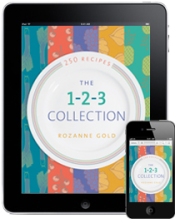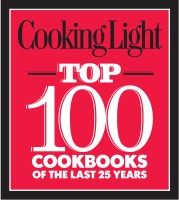 Hardly a day goes by when you’re not brutally aware of the obesity crisis that’s overwhelming kids (and adults, too, for that matter. The most recent country to raise the alarm about extreme weight gain and processed food is Australia.) But it is children we should worry most about because good or bad eating habits and food cravings form early in life, and it is incumbent upon us all to steer children in healthier directions.
Hardly a day goes by when you’re not brutally aware of the obesity crisis that’s overwhelming kids (and adults, too, for that matter. The most recent country to raise the alarm about extreme weight gain and processed food is Australia.) But it is children we should worry most about because good or bad eating habits and food cravings form early in life, and it is incumbent upon us all to steer children in healthier directions.
You read lots about the medical fallout, including diabetes and heart conditions – but the social stigma, and resultant poor self-esteem, can damage a child just as profoundly. One wonders how the psychological disconnect between scrawny fashion models on Project Runway and disappearing waistlines plays out in teenage behavior and achievement. The reality is that snacking is a great growth industry and virtually every packaged food company around the world is seeking ever more ways to sucker kids into consuming ever more unhealthful food – all the while telling them, disingenuously, to eat smarter. One company, Uncles Ben’s, has just launched their second annual “Ben’s Beginners Cooking Contest” where children in grades K-8, along with their parents, can submit home videos demonstrating the preparation of a rice-based dish. While rice is an important staple in many at-risk communities, I believe it may be a worthwhile effort to begin the conversation. That is, if rice is a small part of the equation (and preferably brown rice) and lots of fresh vegetables, a bit of protein, herbs and spices make up the rest of the recipe. It’s an appealing lure: The winner gets $15,000, an appearance on Rachael Ray, and a $30,000 cafeteria makeover for the child’s school.
Fortunately, there are valiant attempts to stop the scourge of junk food, processed food and fast food as a national diet. There is Michelle Obama’s “Let’s Move” campaign, Lynn Fredericks’ innovative crusade to make kids healthier through hands-on, evidence-based FamilyCook programs in schools, communities, and farms across America; Katherine Newell Smith’s new project in Fairfax County Virginia called Real Food for Kids, that advocates for better school food with a pilot soup, salad, and sandwich bar that is slated to open in September. There is Nancy Easton and Bill Telepan’s formidable Wellness in the School (WITS) program, Liz Neumark’s brilliant Sylvia Center at Katchkie Farms in the Hudson Valley, and countless more initiatives across the country. There is even my own book, EAT FRESH FOOD: Awesome Recipes for Teen Chefs (Bloomsbury), reviewed in the science section of the New York Times (2010), which attempts to jump-start a solution by means of a very simple message (or plea, in my case) – to eat fresh food.
Now comes another wonderful approach that is already attention-worthy with a global platform. Sally Sampson’s CHOP CHOP is a quarterly non-profit food magazine that, since its inception in 2010, has distributed over four million copies to pediatricians, children’s hospitals, schools, and youth-based community organizations. In addition, the magazine is distributed in 12 countries and is published in both English and Spanish. ChopChop’s mission is to inspire and teach kids to cook and eat real food with their families. “Filled with nutritious, great-tasting, ethnically diverse and inexpensive recipes,” Ms. Sampson’s vision is to reverse, or better yet, prevent childhood obesity.
And just this week, her vision, and that of an impressive Advisory Board, including Walter Willett, Chair of the Department of Nutrition at Harvard’s School of Public Health, is illuminated with a brand new cookbook, published by Simon & Schuster. Chop Chop: The Kids’ Guide to Cooking Real Food with Your Family is a natural extension of the magazine which won a James Beard Award as publication of the year 2013. The magazine is $14.95 for four issues; while the attractive trade paperback, chock-a-block with great photos and more than 100 recipes (including an appealing sounding vegetable chili and yummy salmon burgers), is a bargain at $19.99.
Sally Sampson’s own story is also book worthy. A veteran cook and cookbook author, she is the mother of a child with a chronic illness who chose to do something “meaningful by using cooking as a way to address the obesity epidemic.” A girl after my own heart.
As I see it, cooking can be a valuable social connector for kids, teens and families — more delicious than any web experience could ever hope to be. Social networking, an obfuscation in presenting the truth about human relationships and experiences, much like the notion of reality TV, does nothing to strengthen real bonds between families and create meaningful memories of personal accomplishment and team play. The very act of cooking postulates an interesting idea that may ameliorate the growing concerns about healthy eating. If families started cooking together, and then eating together, there’s a good chance they can create healthy taste memories to last a lifetime.
ChopChop headquarters, located in Watertown, Massachusetts, is funded through sponsorships and subscriptions. Noble in its cause, ChopChop, the book, is endorsed by the American Academy of Pediatrics and will make its debut on August 13th. Put it on your shelf next to Eat Fresh Food, Liz Neumark’s upcoming Sylvia’s Table, and Lynn Fredericks’ just-published Get Your Family Eating Right! The revolution continues.









